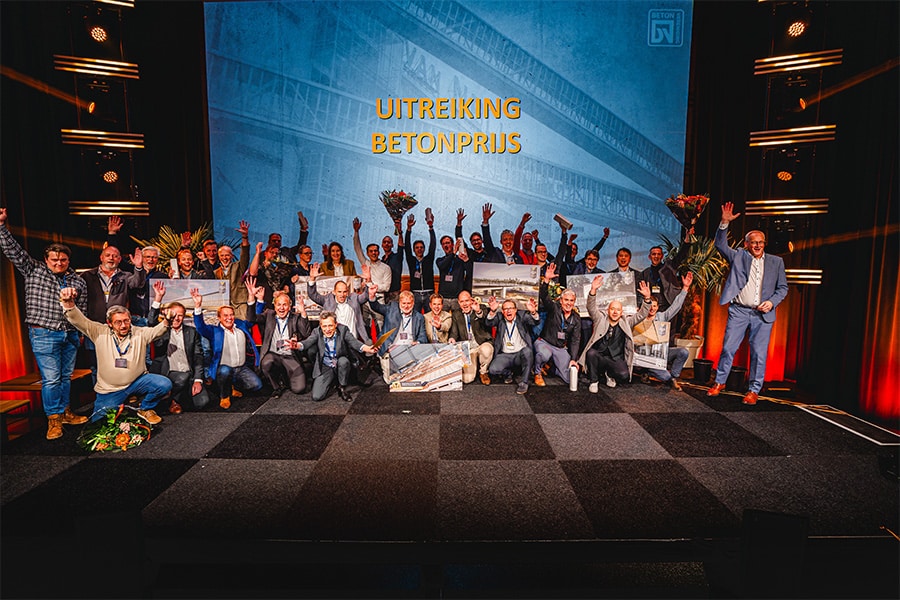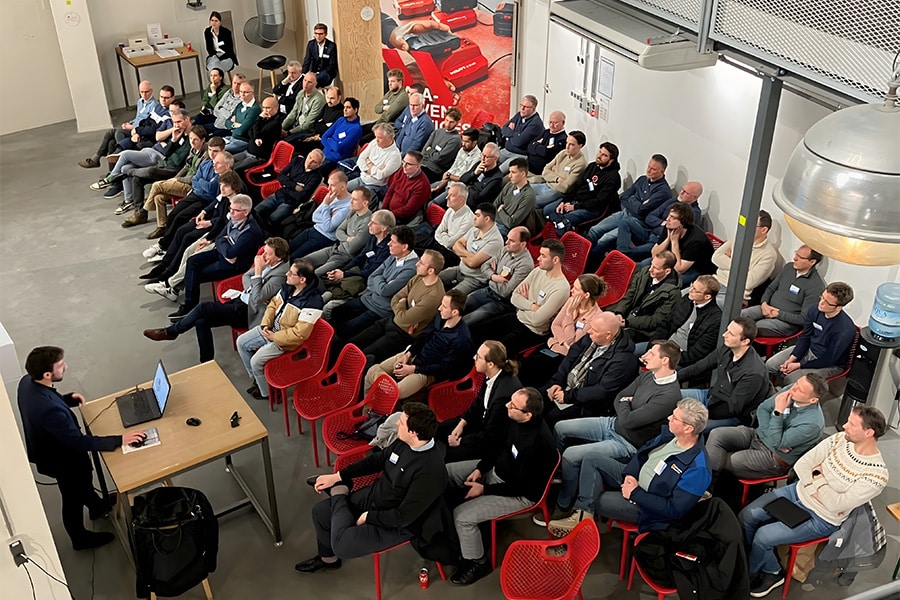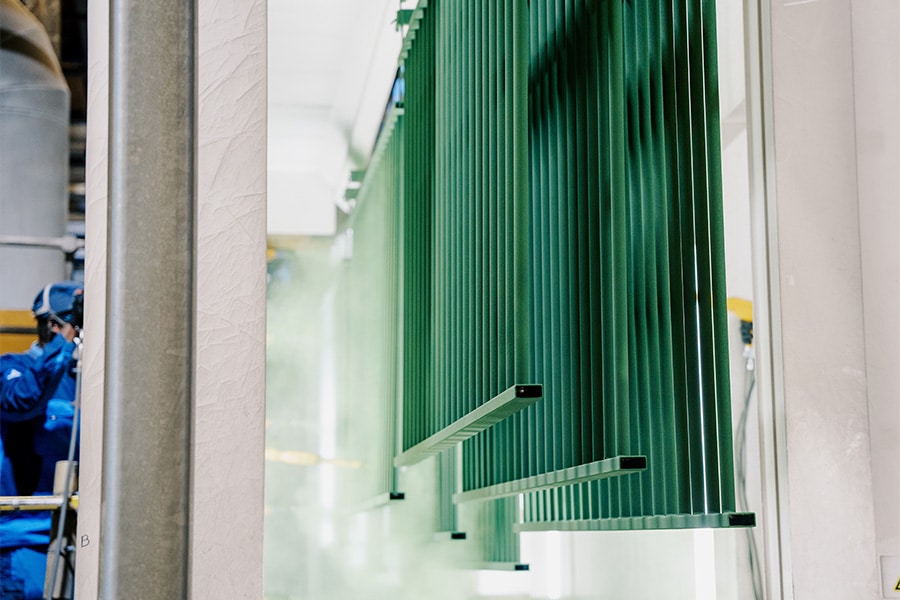
Interview | Rob van Gijzel - 1 year of Concrete House
The Concrete House is celebrating its one-year anniversary.
The employers' association for the cement and concrete industry is committed to the interests of this branch of industry. By conducting a powerful lobby, sharing knowledge and promoting the strong properties of concrete, Betonhuis responds to current themes such as circular economy, the construction agenda and sustainable construction.
"Now that the time has come, one wonders why the Concrete House was not created sooner," says Rob van Gijzel, president of the Concrete House. "By now, more than 200 concrete (mortar) plants have joined the Concrete House. That is a solid foundation to fulfill our mission. By joining forces, we want to maximize the architectural, financial and social potential of concrete as a building material. We do this primarily by organizing meetings where members, member companies and clients can get to know each other."
Concrete Agreement
Concrete House's first major action was its involvement in the Concrete Accord. "There were all kinds of people involved in drafting the Concrete Agreement," Van Gijzel explains, "but not one representative from the industry. During a members' meeting, we decided that we belonged here and definitely wanted to be heard from. From then on, cooperation was a fact. We studied the agreement and added to it. Then the majority could agree to it."
The major assignments
In her first year, Concrete House was also active in the field of education. She identified talent needs and is now involved in developing educational programs. She creates internships for all levels and looks at what the members can do together on the big tasks such as building infrastructure, energy transition and climate control. Van Gijzel: "There is still a lot of work to do. Not one of the major assignments has been carried out yet. Yet I see many opportunities, especially for the concrete industry. I'm thinking of building differently, so that the house price can go down by about 25% and a gigantic impulse can be given to the energy transition. I am thinking of water regulation and permeable concrete, through which we can contribute to climate adaptation. We haven't done enough of this yet. Now that we are thinking together about climate adaptation, I am convinced that solutions will come."
Concrete - You can make wonderful things with it
Some 15 million m3 new concrete in the Netherlands. This is not for nothing. Concrete offers unprecedented possibilities and cannot be compared to any other building material. Due to its high strength, natural material properties, color possibilities and easy processing, it offers an architectural freedom of form that appeals to everyone.
"You can make beautiful things with it," agrees Rob van Gijzel, president of the Concrete House. "Moreover, structures with concrete have a modern and safe appearance. Beautiful examples are the renovated Museum Boijmans Van Beuningen in Rotterdam and soon the Naturalis Museum in Leiden. In addition, concrete is relatively cheap and durable. Over the long term, concrete is the most sustainable material we can think of."
First branch in the Netherlands | Concrete Agreement
2018 was the year of the Concrete Accord. On July 10, some 50 of the largest players in the cement and concrete industry signed the agreement, led by CSR Netherlands. With 15 million m3 new concrete is being added, manufacturers, clients and contractors are making a concerted effort to cooperate extensively on sustainability, recycling of materials and substantial reductions in CO2-emissions.
Rob van Gijzel, president of the Concrete House, is pleased with the agreement and calls it a milestone. At the same time, he makes a comment. "We are doing well in the Netherlands. Worldwide, the cement and concrete industry faces a CO2-emissions of 9%. In Europe it is 6% and in the Netherlands 3%. On top of that, we have marginal influence on that 3% anymore. We use slag from the blast furnace industry and fly ash from power plants as a binding agent. With this, we are very circular. Now that scarcity seems to be occurring in this - for example, due to the closure of coal-fired power plants - we will have to look for alternatives. Clinker production in the Netherlands no longer takes place. Besides clinker, we also import cement from Germany, Belgium and France, and the CO2-emissions on behalf of these countries. For us, this means that we have to reduce CO2-emissions in that area cannot be reduced any further. However, we are looking forward to materials that can replace fly ash and blast furnace slag in resource and function."
Preserve
An important part of the Concrete Agreement is making concrete more sustainable. Factors involved are raw materials, circularity and CO2-reduction. "So in the area of raw materials, we need to take steps to not be dependent on other countries. Sand and gravel are plentiful. Also in the field of circularity we can still make steps. We have to take into account already in the design phase that everything has to be suitable for reuse. This goes well for concrete; it is almost 100% recyclable. Residual concrete is crushed into granules and used as a gravel substitute in new concrete or it is used as a foundation material under roads. Concrete is already a very environmentally friendly building material."
The only one in the Netherlands
With the Concrete Agreement, the concrete industry is taking responsibility. It is building a sustainable growth of the sector, with members challenging each other to do things better. "The concrete sector is the only sector in the Netherlands that has concluded an environmental agreement," Van Gijzel concludes. "In this, we are leading the way. In doing so, it is not easy. Many critical eyes closely follow the developments in the concrete industry."
Featured image:Former Mayor of Eindhoven and former Member of Parliament Rob van Gijzel will be the new chairman of Betonhuis. The board of the federative association of the cement and concrete industry has decided to do so. Van Gijzel will start as of March 1, 2018. Betonhuis thus continues the professionalization of its organization.



